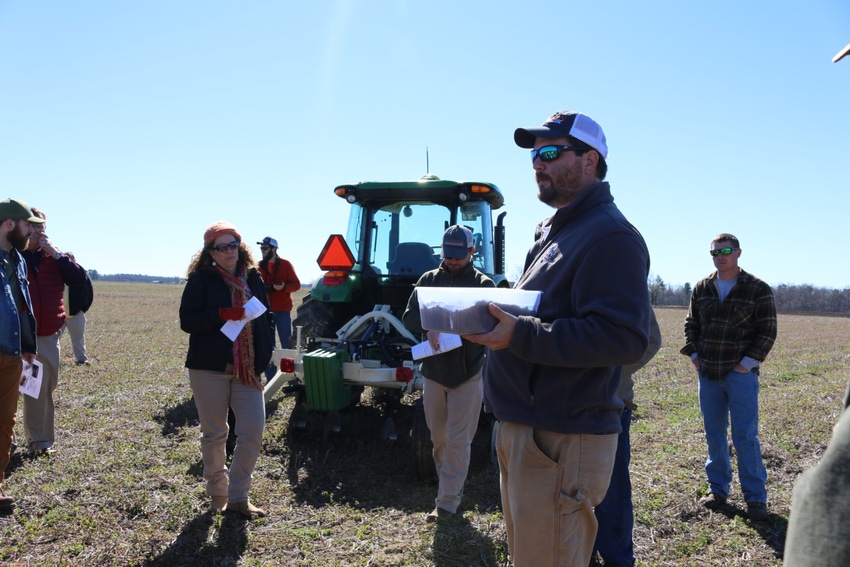May 10, 2017

Clemson University agricultural engineer Kendall Kirk has developed free software to help farmers track soil sampling throughout fields.
The software pairs with an inexpensive global positioning system and a laptop computer to pinpoint exactly where soil samples are taken as they are taken. This ensures growers are taking adequate samples throughout field management zones, which are areas of field with common soil characteristics that will likely require similar nutrients.
Those samples then can be sent to local Clemson Cooperative Extension Service offices for testing at Clemson’s Agricultural Service Laboratory.
“What you’ll have is a soil sample ID for each sampling zone. Send that to Clemson and you’ll get it back with a nutrient recommendation,” Kirk said. “These soil samples are guiding your nutrient application rates, your potassium and phosphate applications… At the end of the day, we are trying to boost profitability.”
Accurate soil data can help growers maximize yields or lower operating costs by optimizing nutrient inputs. Growers interested in obtaining a copy of the beta-testing version of the software can contact Kirk at [email protected].
Kirk and Hollens Free, a precision agriculture expert with the Clemson Cooperative Extension Service, demonstrated the software to attendees of a recent field day at the Edisto Research and Education Center. Growers followed a tractor as samples were collected throughout a field. A large computer monitor mounted to the rear of the tractor displayed a map generated by the software, showing the position and the zone where each sample was taken.
The soil-sampling software is among numerous informational materials Clemson Public Service and Agriculture and the Cooperative Extension Service provide South Carolina residents. At the field day, Extension also provided attendees a flash drive with a collection of digital reference materials, including enterprise budgets for row crops, results from crop variety tests, the most current pest management handbook, the 2017 Peanut Money Maker Guide, the Wheat Cheat Sheet and more. Growers can contact their local Extension office about obtaining a flash drive of these materials.
The field day focused on precision agriculture and included numerous presentations on emerging agriculture technologies from Clemson experts and representatives of Blanchard Equipment Company, which cosponsored the event.
“We want to provide the educational materials and tools growers need to reduce the barriers for utilization of precision ag technologies,” Kirk said.
The Edisto Research and Education Center in Blackville in recent years has expanded its precision agriculture program that utilizes new technologies like unmanned aerial vehicles, sensors and GPS equipment to make farming more efficient, profitable and environmentally friendly. It has a particular focus on reducing agricultural use of water, pesticides and fertilizer.
Farmers should embrace the technologies not only because they improve farm profitability, but they show policymakers that farmers are doing all they can to be good environmental stewards, said Harry Ott, president of the South Carolina Farm Bureau.
“We have to show the public — the 99 percent of the population who consumes the food grown by just 1 percent of the population — that we are doing our part to protect water, to protect the environment and to provide a sustainable source of food,” Ott said. “Fertilizer reduction and water conservation are attractive to the public that drives the policies that affect agriculture.”
Agriculture and forestry comprise South Carolina’s largest industry with an annual economic output of $41.7 billion.
About the Author(s)
You May Also Like




